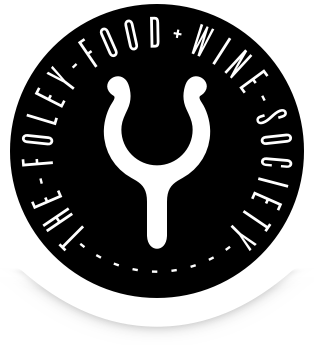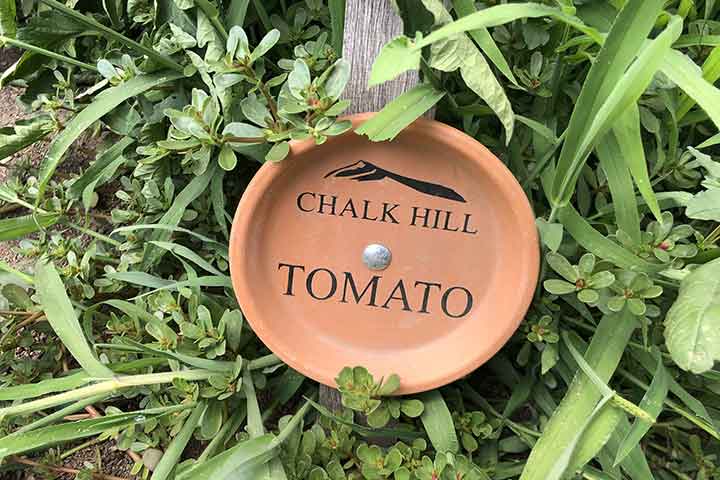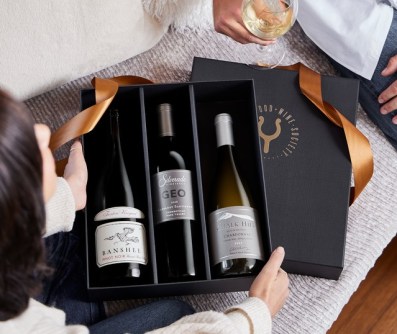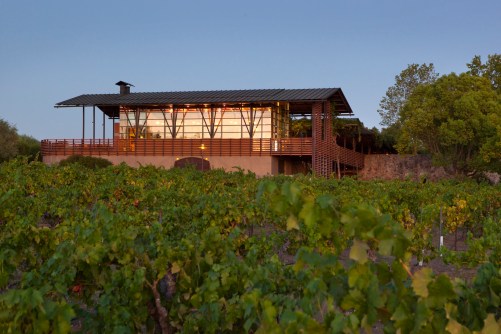By Jonathan Cristaldi
This is part two in a mini-series of visits to the Chalk Hill estate gardens in Sonoma. And as I said in my first report, nothing in the world compares to the taste of fruits and vegetables, plucked from a sustainably farmed garden, and nibbled on—while standing in the garden. This time, instead of strawberries, I was nibbling on an array of peppers and basil, all featured below.
The gardens at Chalk Hill are cultivated by two all-star gardeners. Brad Agerter, the Estate Culinary Garden Manager, who, incredibly, has spent 13 years working the beds. Joining him is Scott Pavlick, the Assistant Garden Manager, who has been dusting Chalk Hill dirt off his boots for four years.
Before touring the gardens, I asked Brad to impart some practical advice for the home gardener. This is what he had to say:
PLANTER BOXES VS PLANTING DIRECTLY IN THE GROUND
Brad: “If you have a big enough space and can plant in the ground, you just have to make sure the soil is healthy. Planter boxers are great because if you’re embarking on small scale gardening you can put gopher wire under the box which will help with a lot of problems in the beginning, and you can pick the best soil to fill the boxes with.”
THE DIRT ON POTTING SOIL
Brad: “For larger scale planter boxes, you could go to a big soil place like Soils Plus. Given we’re in Sonoma, we have a lot of local options. Nearby Chalk Hill is RAMM Rock & Landscape Supply, which has an array of potting soils. I’d suggest seeking advice from your best local potter. We also use Grab N’ Grow Soil Products. The thing to note is how much soil you’ll need. You could spend $12 on one bag of potting soil at a local supplier like Home Depot, but if you’re trying to fill a half wine barrel full of soil, you might need three bags of that soil. But if you go to a place like RAMM Rock or Grab N’ Grow, and get a yard of soil, which would fill a standard pickup truck, you’ll spend maybe $150, and have more soil than you’d know what to do with (more planter boxes!) Don’t buy bag after bag!
Brad: “Most importantly, the soil needs to have good drainage, but should be able to hold moisture and have good nutrients. I always suggest getting extra compost, which has a lot of microorganisms that digest soil and process nutrients for the plants while leeching out toxins and such.”
THE DEAL WITH WATERING
Brad says that if you have a small enough garden and can water yourself everyday do that, as you’ll save money on potentially expensive installations of drip or sprinkler systems.
“We have long row crops at Chalk Hill and use drip irrigation. But a planter box might have a lot of varying plants that require different amounts of water. You can get emitters that regulate water use. Say, you have cucumbers growing next to tomatoes. You’d install a smaller emitter on the cucumber plants, which lets out less water while a larger emitter on the tomatoes offers more. There are all kinds of tricks. If you can afford it, install a timer on the emitter and set it and forget it! Set your timer and go to Italy and have your tomatoes when you get back!”
WHAT TO PLANT WHERE
“Most importantly, you need to know what USDA growing zone you’re in. We live in zone 9 in Sonoma. The zones are climate and weather dependent. They’ll help to ensure you don’t plant the wrong thing in the wrong season!
And in terms of getting going, you have to decide if you’re planting from seeds or going with starter plants from a nursery. You want to find a really good nursery that has a good quality ‘start’ or you have to do a lot of seed work in a greenhouse. Home Depot has whatever they have and could he root bound and struggling and watering could be irregular and plants could be stressed out. So be sure to ask a lot of questions before buying. We got to Harmony Supply, which sells seasonal starter plants, so we know they are growing things well within our zone. One of the best places to find great starts is a local farmer’s market. There will be local farmers leveraging their greenhouses to create good starter plants. They will know what is seasonal and popular.”
THE FIRST FEW DAYS OF PLANT LIFE
Brad: “Weed everyday. Don’t let those weeds go for more than a few days because big weeds mean you could be pulling up the roots of your good plants too. Water new plants in very well so they marry with the new soil. And above all, pay attention! If the plant is not looking good you are over or under watering. And one note about aphids. We use an organic insecticidal soap—it’s called Neem oil and is mixed with water and it gently adds a layer of coating that bugs won’t go near. We also grow other plants that are habitats for the good bugs. I like the Yarrow flower, a big white flower that attracts parasysitic wasps that attack aphids. They’ll also attract lady bugs, which eat the ahpids! Good luck!”
SUMMER OF GARDENING AT CHALK HILL
So, just what is growing in the gardens now, in the summer of 2021? Let me take you on a personal tour.
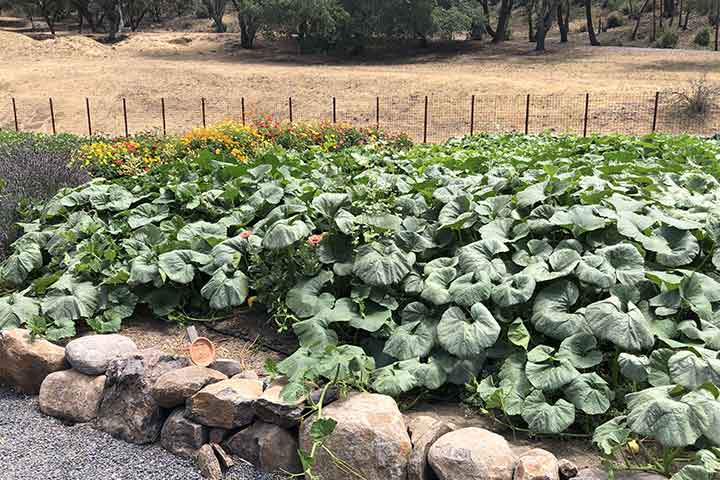
Kabocha—a winter squash. Dark green and hard-skinned. “Makes great pies,” says Brad. “I make a Kabocha tart. And we’re also growing red curry which is long and red on the outside and of course, we have butternut squash.”
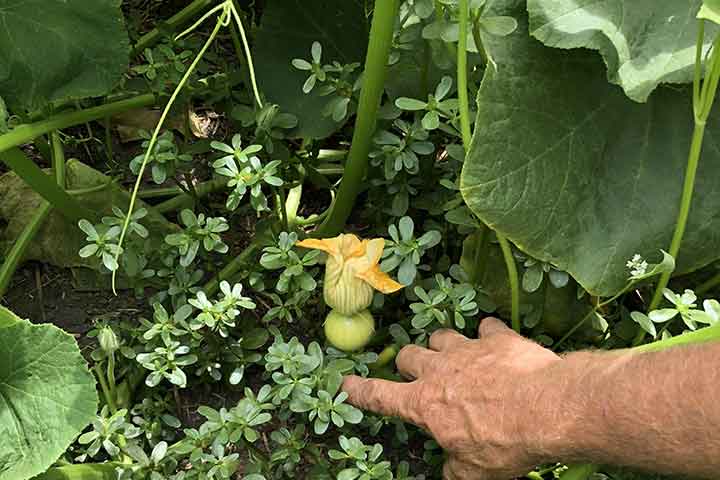
Underneath the Kabocha canopy, is Purslane, which according to Brad is a weed, but a tasty, harvestable weed, which the Foley culinary team uses in salads and the like.
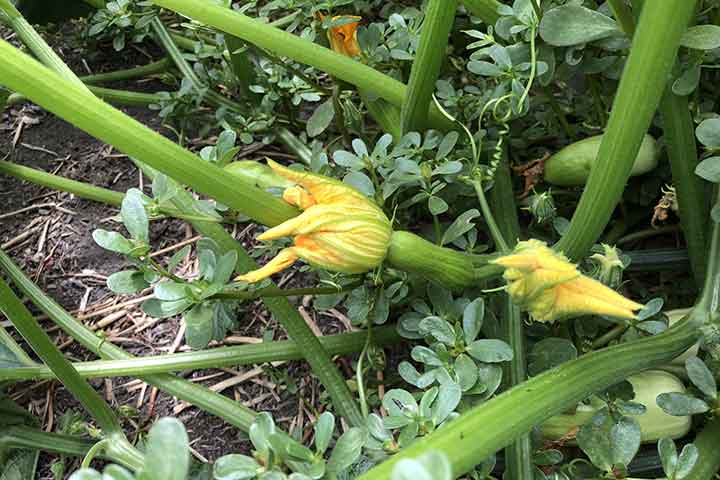
Squash blossoms!
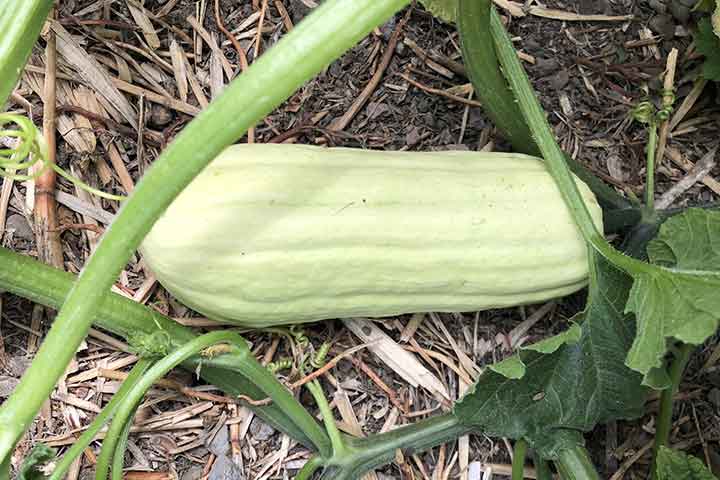
A young squash!
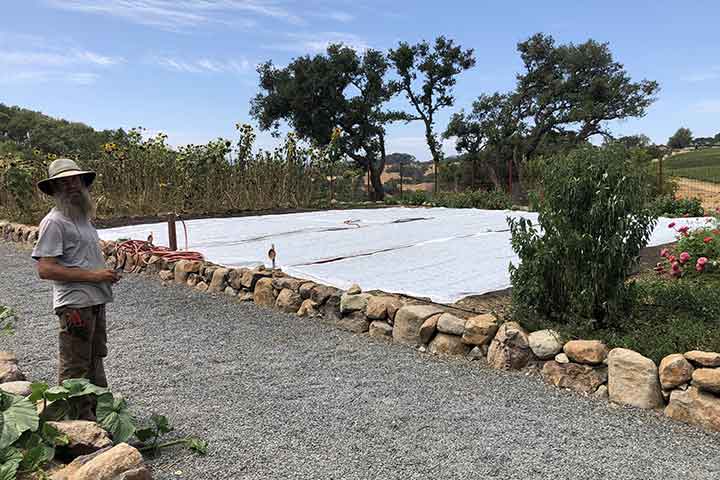
The field with white row cover cloth was planted to beets, carrots, and potatoes when I last visited in late March. Now, there are carrots, beets, and radishes planted, along with an array of nice flowers (far right) and sunflowers (far left) aimed at keeping the birds interested in what’s going on there, as opposed to taking delight in the young seedlings beneath the white cover cloth. That cloth is pretty useful — it allows seventy-five percent of light to penetrate, while providing some frost protection, and also helps keep out bad bugs.
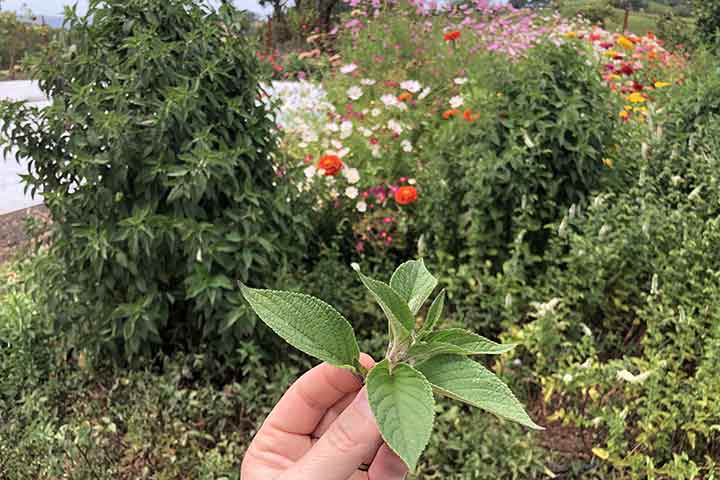
I’m holding a few leaves of Pineapple Sage, which has a tropical pineapple aroma and flavor, and is one crazy versatile herb you can add to—whatever your heart desires. I decided I would mull it in a Paloma cocktail of tequila, grapefruit, simple syrup, and sparkling water.
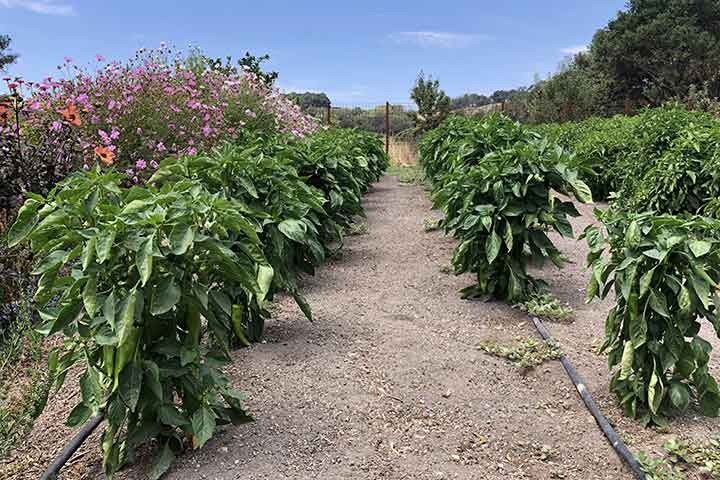
In these rows, we’re looking at sweet peppers: Cornito Rosso (left) and the next image is of young, Jimmy Nardello peppers, which become longer and vivid red, and are sweet.
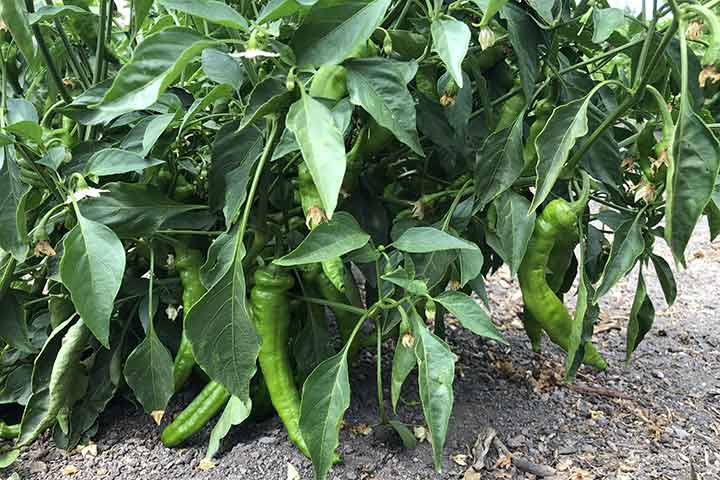
Jimmy Nardello peppers.
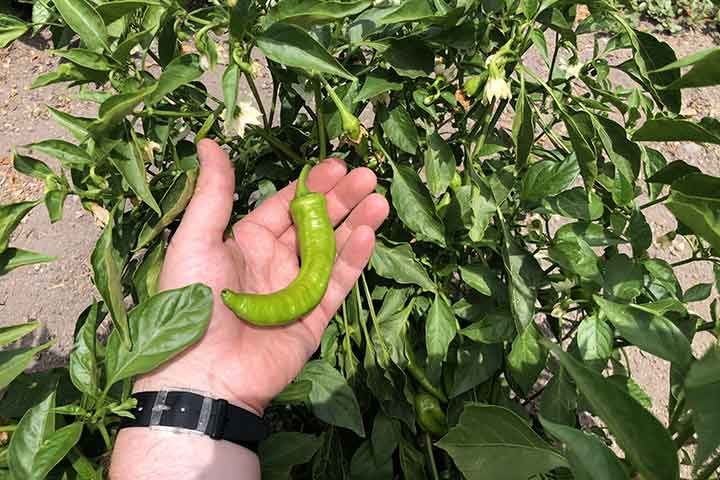
Jimmy Nardello peppers compared to my hand.
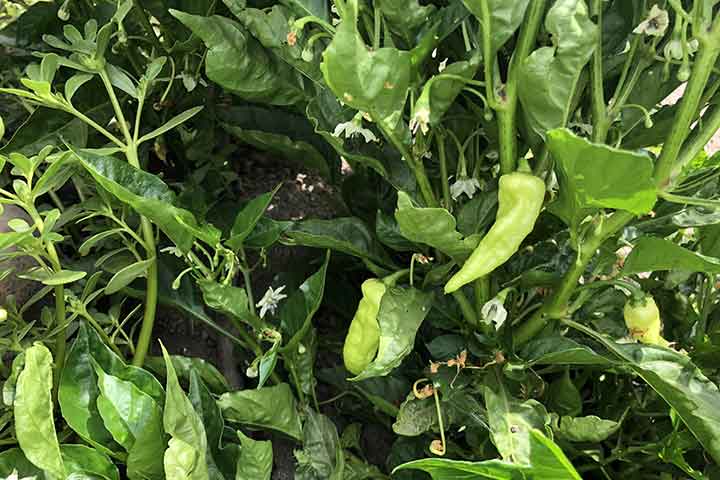
Also some Habanado peppers — these have Habanero flavor without the heat.
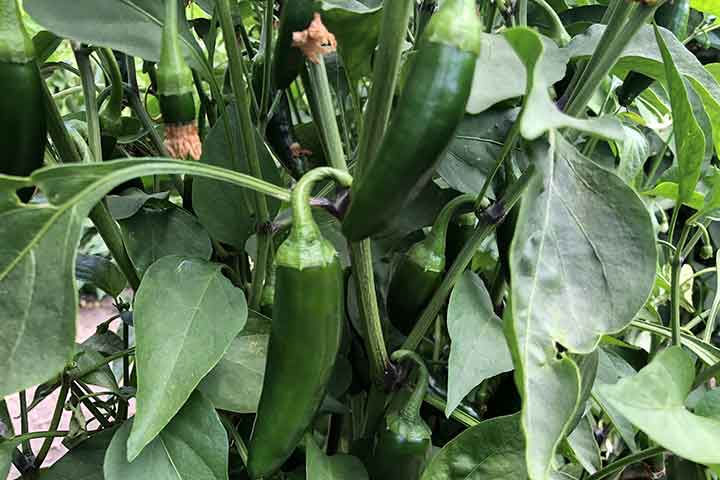
Also growing are Jalapeños!
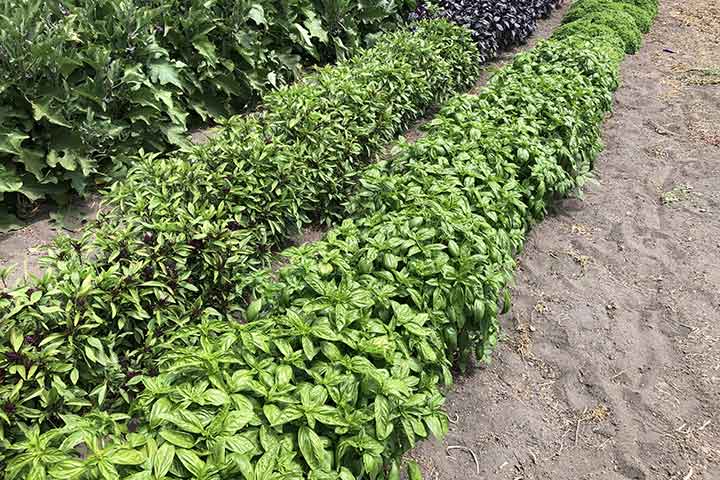
Pictured left is Thai Basil and right is Genovese basil (the typical basil you’d get in the grocery store) and interestingly, the purple basil on the end, in the upper left is also Genovese.
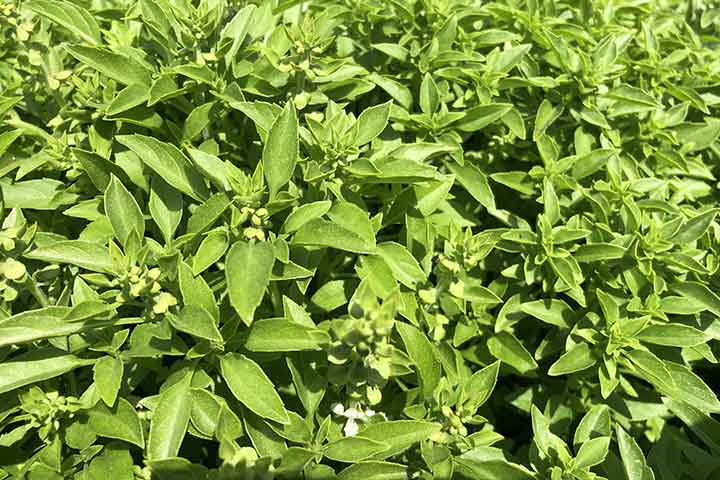
And this is “micro basil,” as Brad refers to it, noting that the Foley estate chefs “use it as a pretty garnish, typically.”
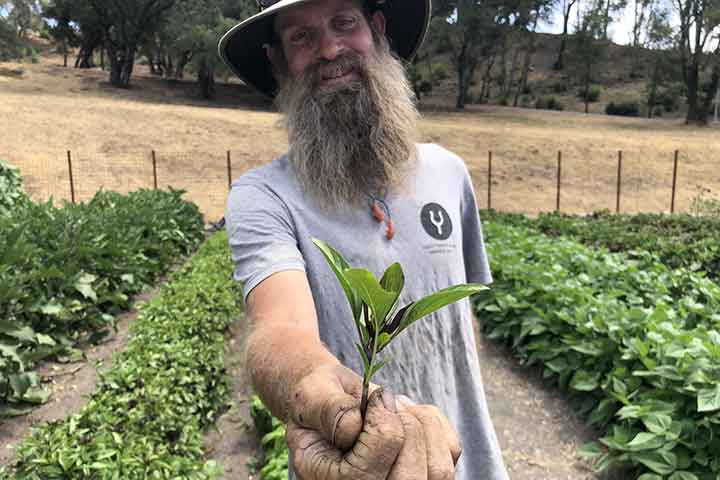
Brad showing off some Thai Basil. (Did you notice the Foley Food & Wine Society logo on his shirt!?)
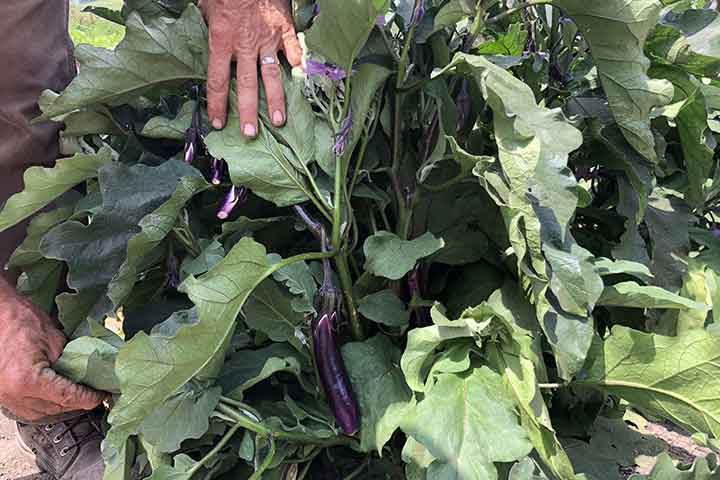
These are Japanese eggplants.
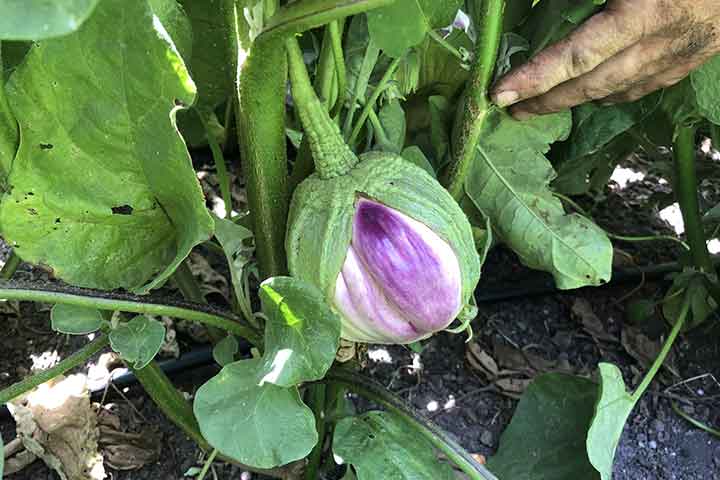
Here we have Rosa Bianca eggplant, an heirloom variety. If you like eggplant this one gets fat and round and “is royally tasty,” says Brad.
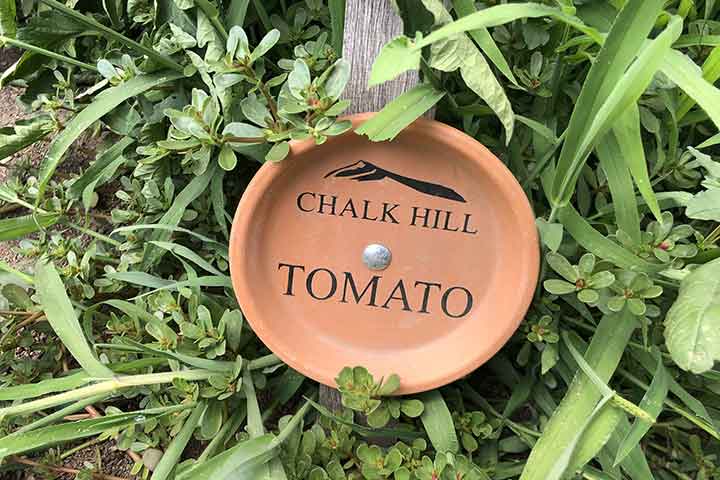
The next four photos are of the young tomato vines growing, but note, courtesy of Brad standing in the middle of one of the rows, how tall they are after only a very short time in the ground.
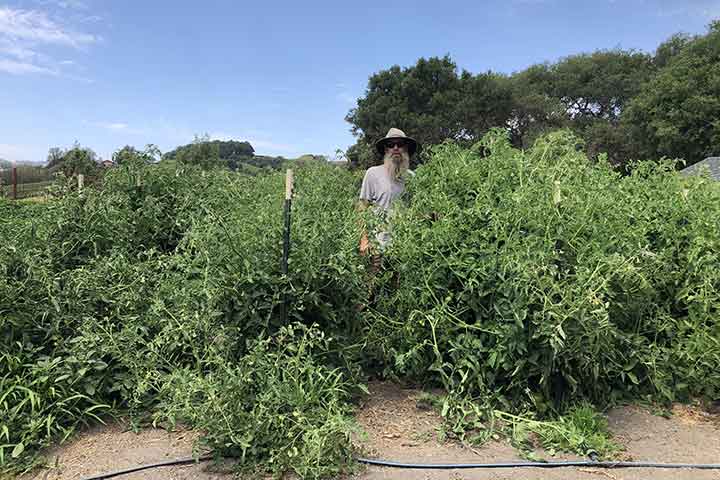
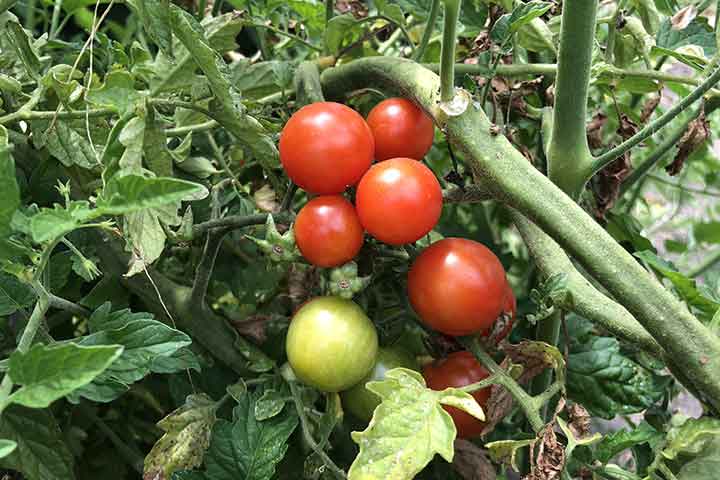
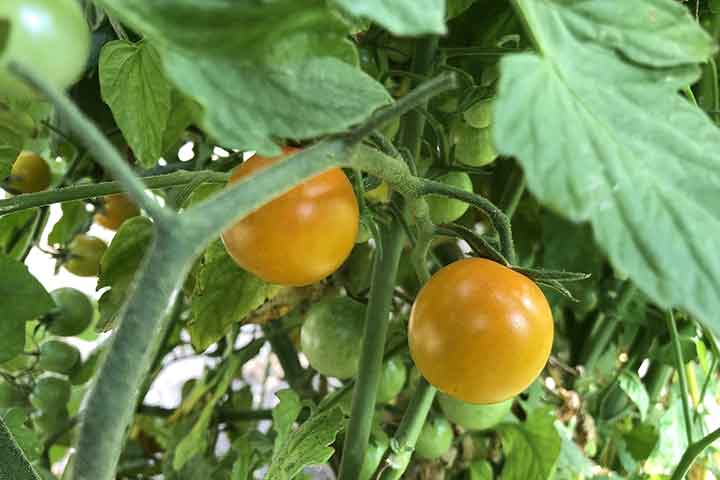
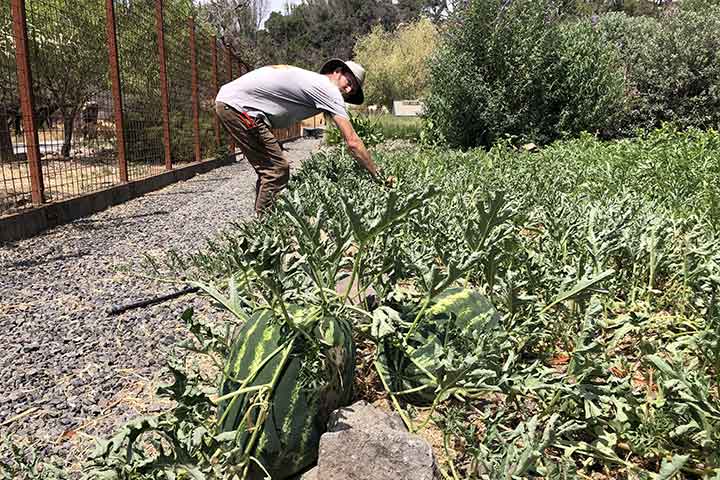
Here in the second garden, we’re knocking on watermelons! Two different kinds of melons are growing: Sugar Baby and Crimson Sweet. “You knock to hear a hollow sound and that tells you it is ripe. If you get a thud, give it more time,” says Brad.
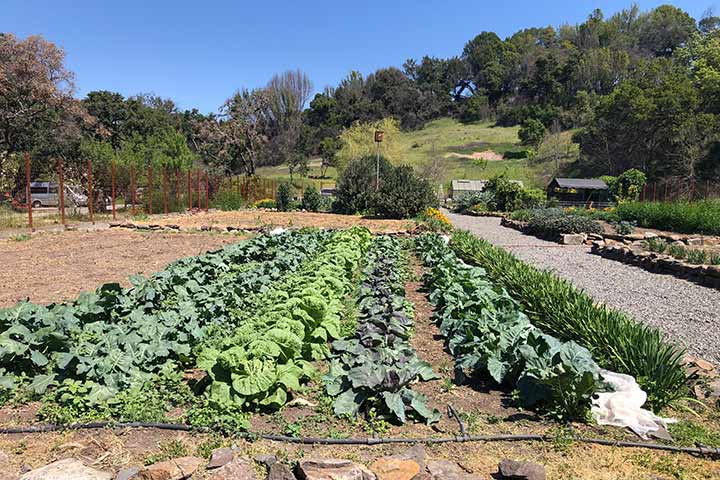
Plan your visit to Chalk Hill now. Come for the gardens. Stay for the wine.
